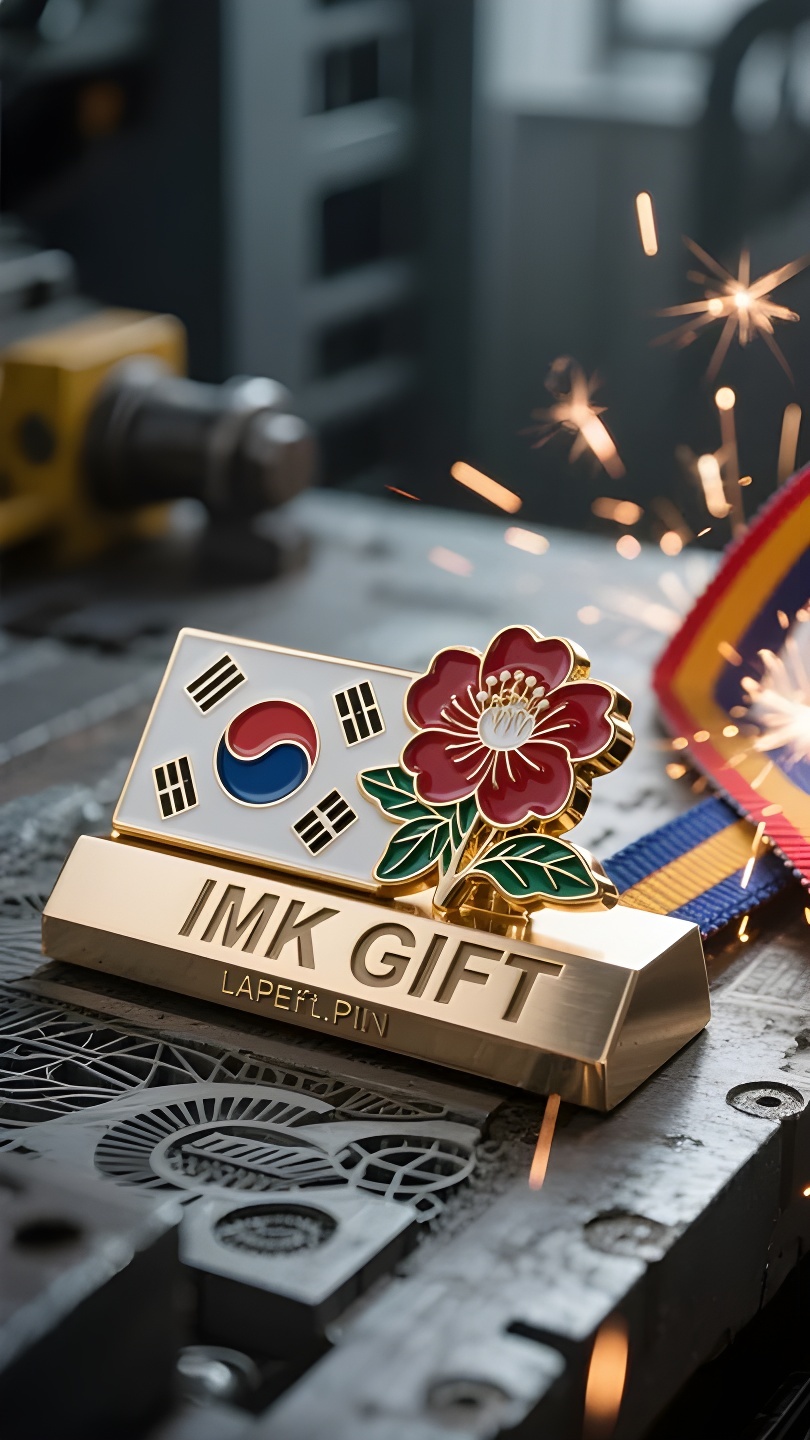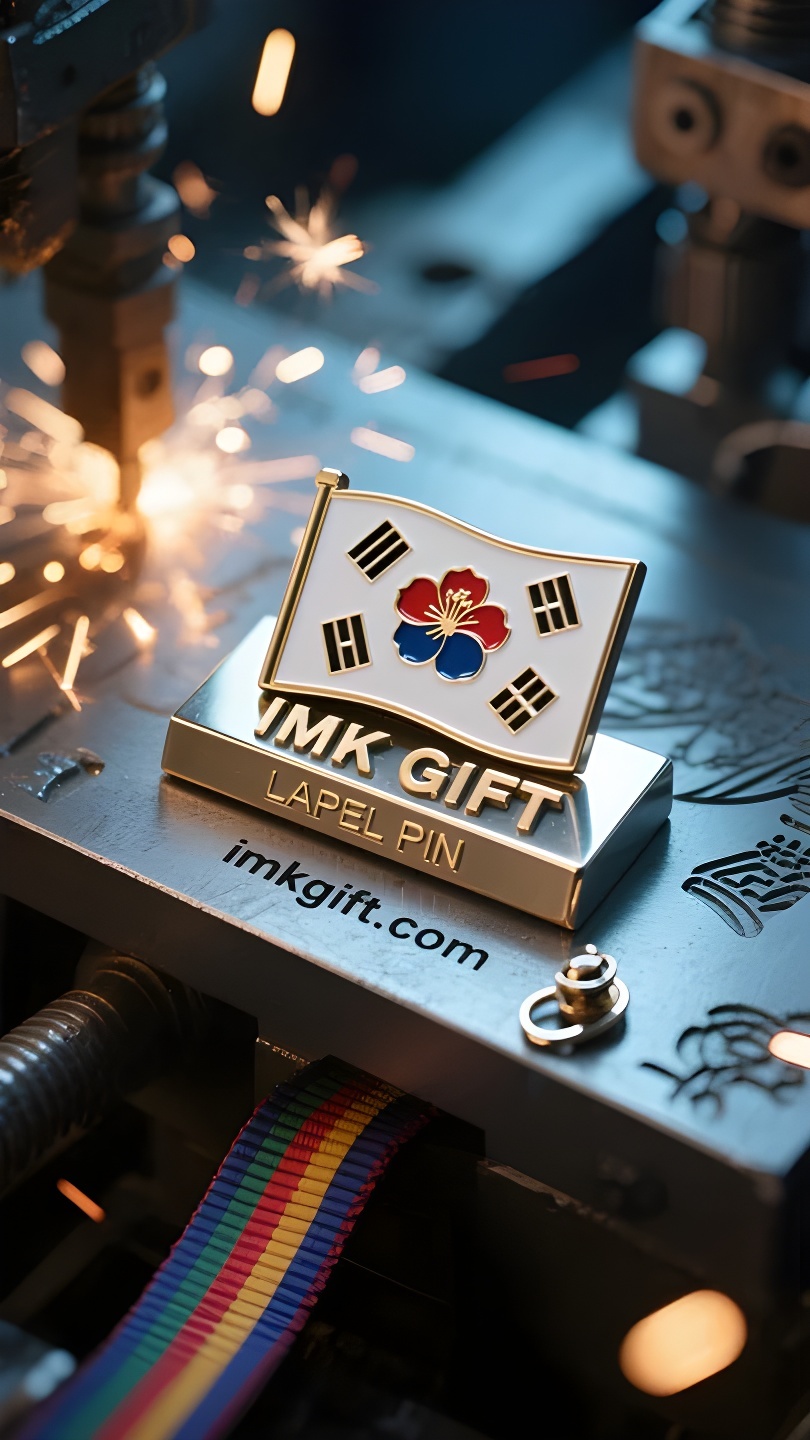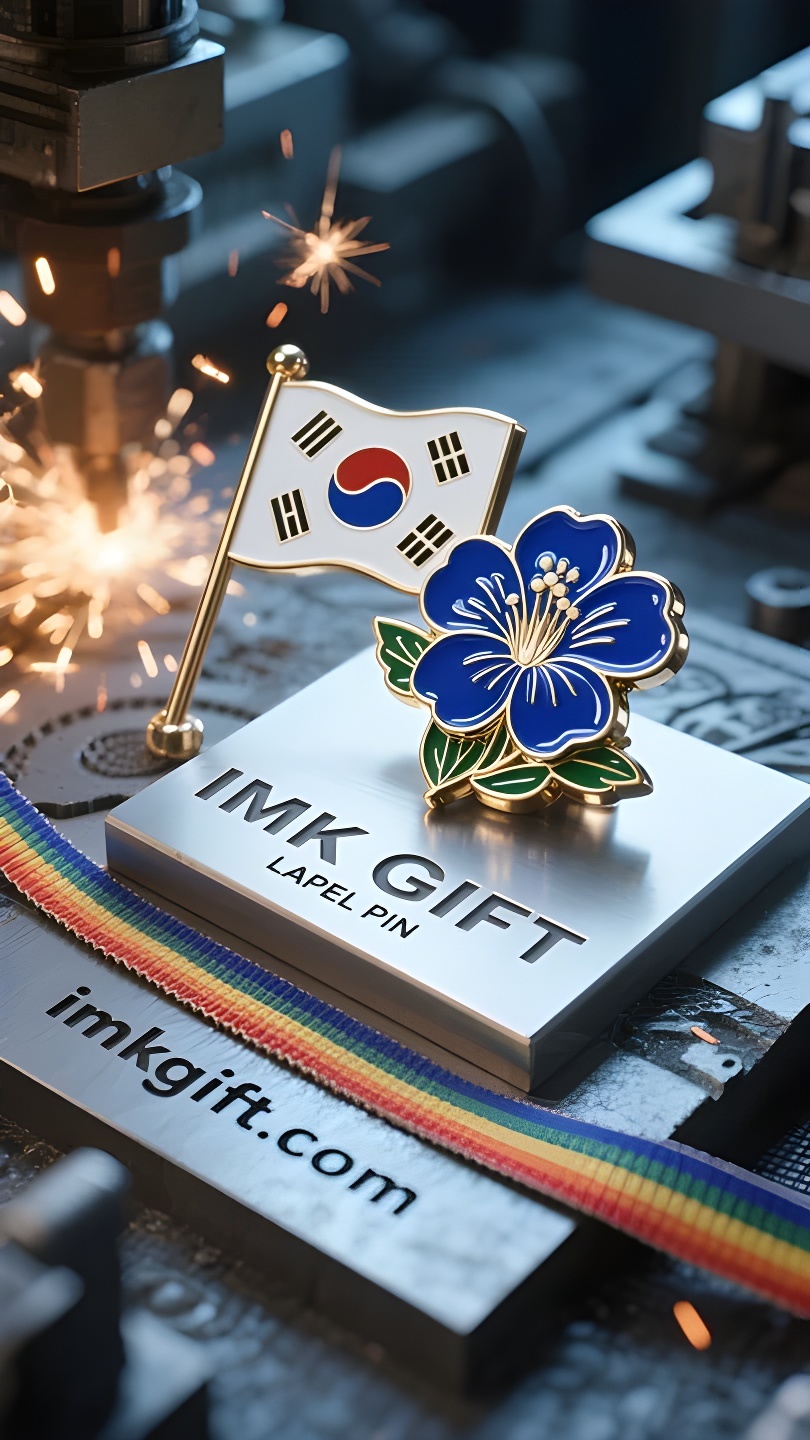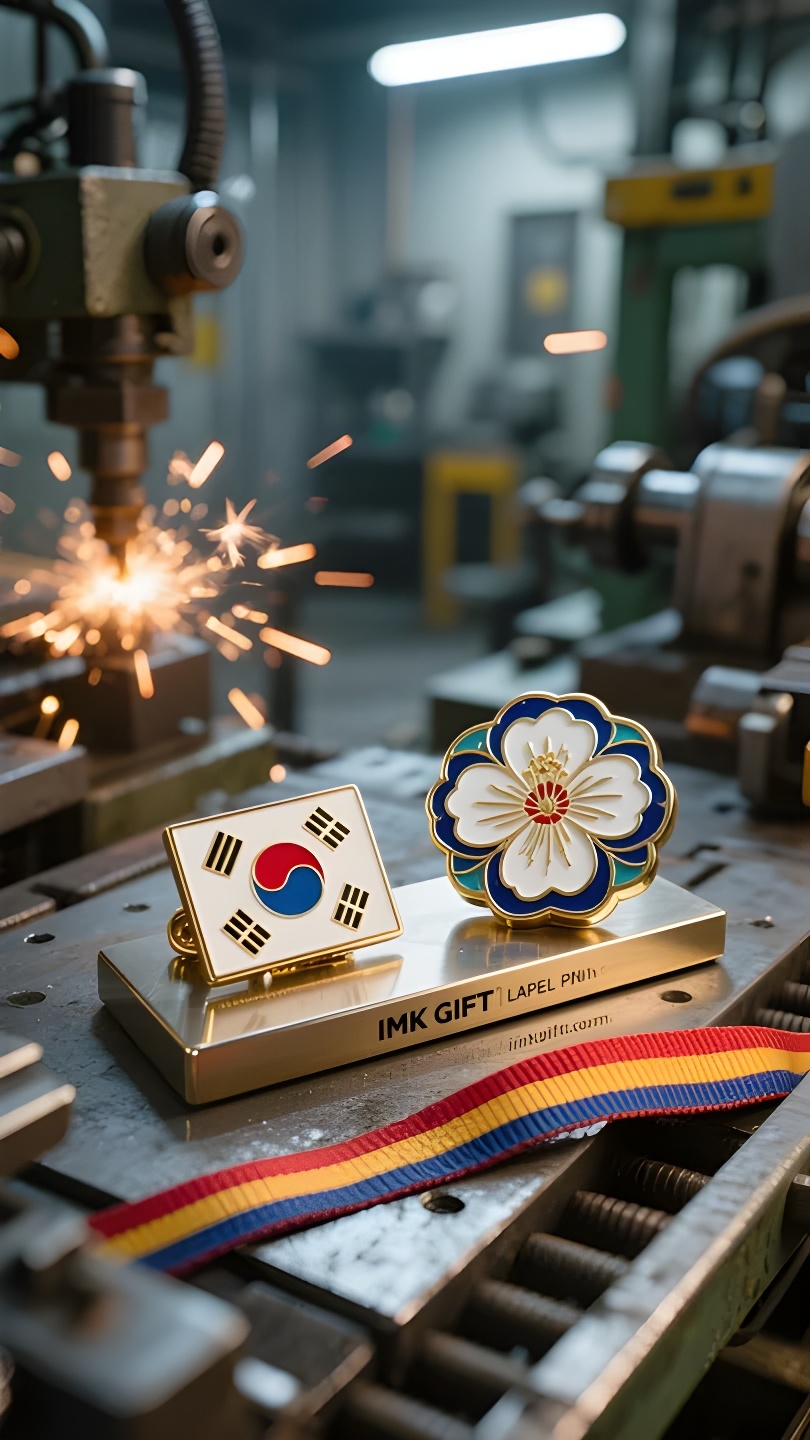in980-무궁화-문진-아래의-산과-강은-영원하다
▼
3월 서울의 봄기운은 아직 가시지 않았고, 거리에 펄럭이는 태극기는 차가운 바람에 휘날리고 있습니다. 3·1운동 기념일이기도 합니다. 국기의 붉은색과 파란색 태극 문양과 사괘는 백 년 전 우리 조상들이 피와 믿음으로 일궈온 민족정신과 같습니다. 음과 양이 공존하고, 움직임과 고요함이 균형을 이룹니다. 광화문 역사관 전시장에는 조선시대의 무궁화 동판이 전시되어 있어 언제나 저를 멈춰 서게 합니다. 세월의 흔적이 묻어나는 다섯 꽃잎의 이 꽃은 한때 황폐해진 기념비 위에서 전쟁의 연기를 잠재우기도 했습니다. 장인은 청동으로 꽃 모양을 주조했지만, 꽃잎 사이에는 대나무 매듭 무늬를 숨겼습니다. 아침에 피고 저녁에 지지만 매일 피어나는 무궁화의 강인함은 부러지기보다는 부러지는 대나무의 특성과 어우러져 있습니다. 문진 바닥에 새겨진 “산천(山川)은 옛 그대로”라는 네 글자는 이 유물을 단순한 실용성을 넘어 문명 계승의 토템으로 자리매김하게 합니다. 오늘날 한국의 젊은이들은 책상 위에 무궁화 문진을 자주 올려놓습니다. 그들의 손끝이 서늘한 청동 꽃잎에 닿을 때, 마치 역사의 긴 강물 속 영원한 불꽃을 만지는 듯합니다. 태극기가 항상 역동적인 균형을 추구하듯, 이 문진은 우리에게 다음과 같은 메시지를 일깨워줍니다. 진정한 인내는 변화에 저항하는 것이 아니라, 계절의 순환 속에서 무궁화처럼 뿌리를 지키고, 비바람 속에서 대나무 마디처럼 중심을 지키는 것입니다. 디지털의 급류가 몰아치는 이 시대에, 전통 문화의 뿌리를 “문진”으로 삼아야만 우리는 조급함을 억누르고 민족의 정신이 시대의 흐름 속에서 고요하게 펼쳐지도록 할 수 있습니다. 산천은 변할지라도 문명을 수호하는 불꽃이 꺼지지 않는 한, 무궁화는 결국 모든 세대의 책상 위에서 새로운 봄을 맞이할 것입니다.
The spring chill in Seoul in March has not faded, and the Taegeukgi flag fluttering on the streets is unfurling in the chilly wind. It is the commemoration month of the “March 1 Independence Movement” in South Korea. The red and blue Tai Chi pattern and the four hexagrams on the national flag are just like the national spirit that our ancestors built with blood and faith a hundred years ago – yin and yang coexist, and movement and stillness are balanced. In the display cabinet of the Gwanghwamun History Museum, a hibiscus copper paperweight from the Joseon Dynasty always makes me stop. This five-petal flower, polished by time, once suppressed the smoke of war in troubled times on yellowed memorials. The craftsman cast the flower shape with bronze, but hidden bamboo knot patterns between the petals – the tenacity of the hibiscus blooming in the morning and falling in the evening but blooming every day is integrated with the character of the bamboo that would rather break than bend. The four words “Mountains and rivers as old” engraved on the bottom of the paperweight make the artifact transcend practical functions and become a totem of civilization inheritance. Today, young Koreans often place hibiscus paperweights on their desks. When their fingertips touch the cool bronze petals, they seem to touch the eternal sparks in the long river of history. Just as the Taegeukgi is always pursuing dynamic balance, this paperweight reminds us: true perseverance does not lie in resisting change, but in keeping the roots like hibiscus in the cycle of seasons, and in keeping the center like bamboo joints in the wind and rain. When the digital torrent sweeps in, only by turning the roots of traditional culture into “paperweights” can we suppress impetuousness and let the national spirit unfold calmly on the scroll of the times. The mountains and rivers may change, but as long as the fire of protecting civilization is not extinguished, hibiscus will eventually bloom in a new spring on the desk of every generation.
三月的首尔春寒未褪,街头飘扬的太极旗在料峭风中舒展。此时正值韩国”三一独立运动”纪念月,国旗上红蓝交融的太极纹与四卦符号,恰似百年前先辈们以热血与信念浇筑的民族精神——阴阳相生,动静相衡。
在光化门历史博物馆的展柜里,一枚朝鲜王朝时期的木槿花铜镇纸始终令我驻足。这朵被时光打磨得温润的五瓣花,曾在泛黄奏章上压住过乱世烽烟。工匠以青铜铸就花形,却在花瓣间暗藏竹节纹路——木槿朝开暮落却日日绽放的坚韧,与竹之宁折不弯的风骨浑然一体。镇纸底部錾刻的”山河如旧”四字,让器物超越了实用功能,成为文明传承的图腾。
如今的韩国年轻人常将木槿镇纸置于案头,当指尖触碰冰凉的青铜花瓣,仿佛触摸到历史长河里不灭的星火。就像太极旗永远追逐着动态平衡,这方镇纸提醒着我们:真正的坚守不在于抗拒改变,而如木槿般在四季轮回中守住根本,似竹节于风雨飘摇时守住中正。当数字洪流席卷而来,唯有将传统文化的根脉化作”镇纸”,方能压住浮躁,让民族精神在时代卷轴上从容舒展。
山河或许改易,但只要守护文明的火种不熄,木槿终将在每代人的书案上绽放新的春天。
▼
Contact Us
📞 Tel: +0086-760-85286839
📧 Email: sales3@imkgift.com








